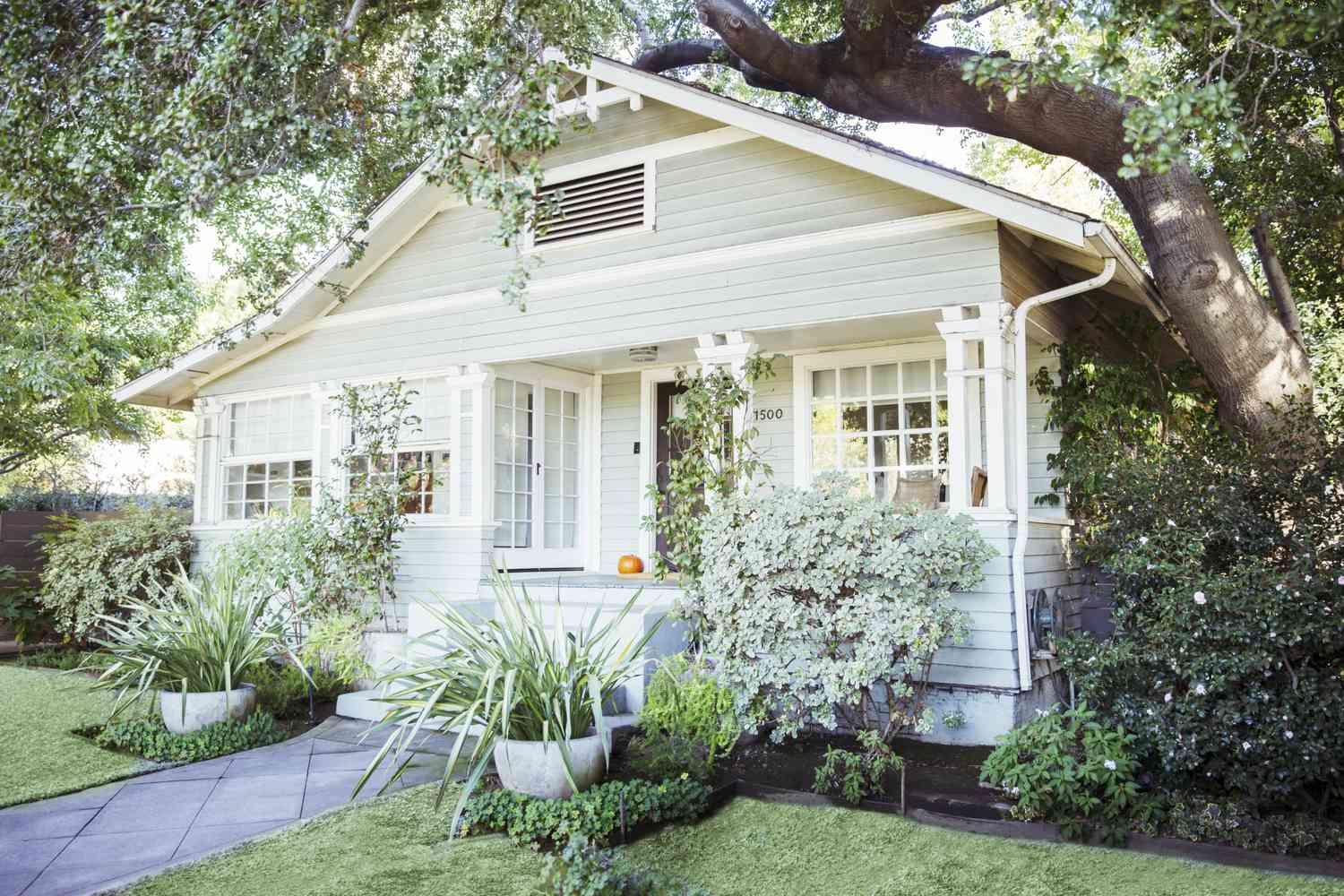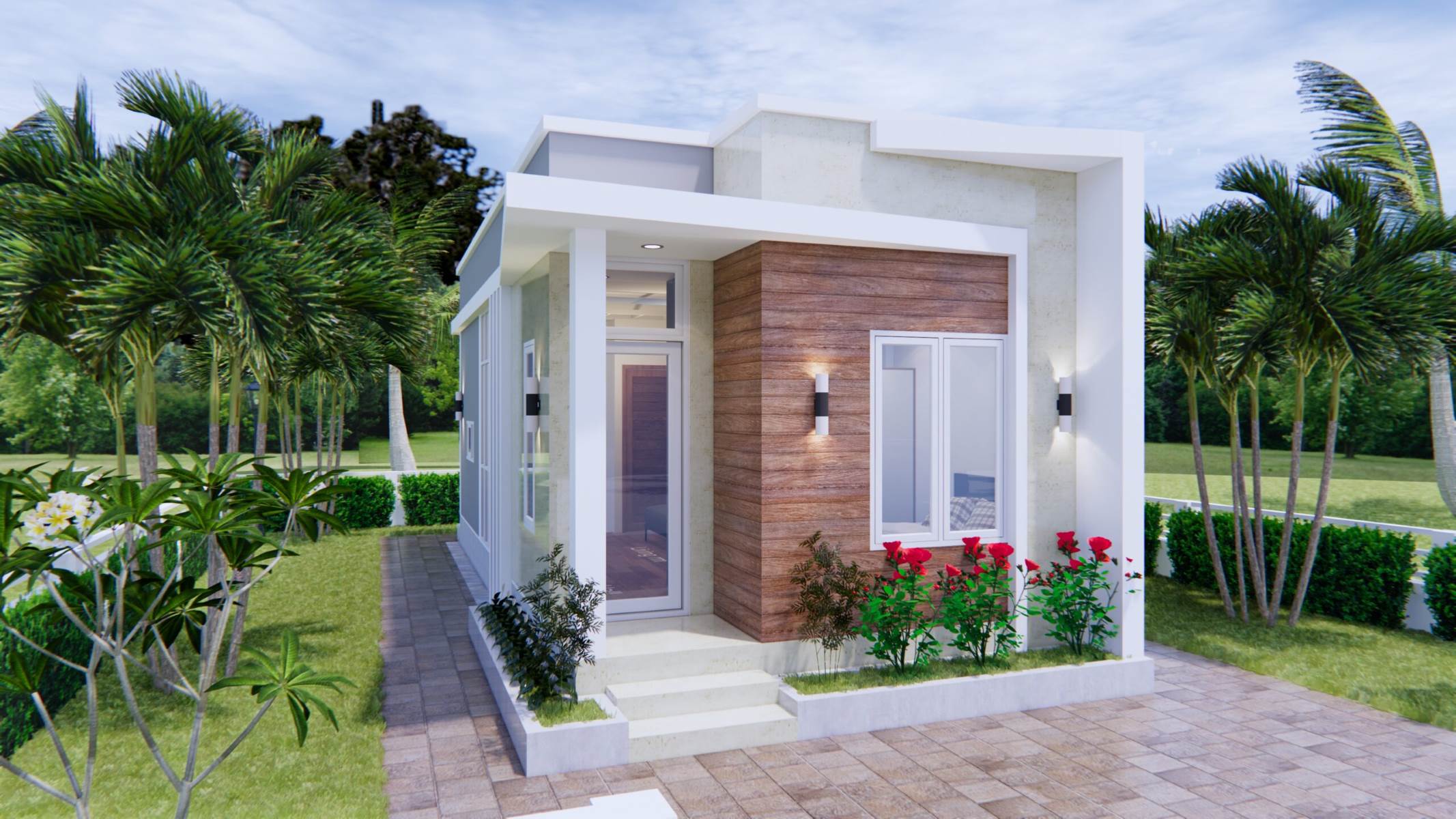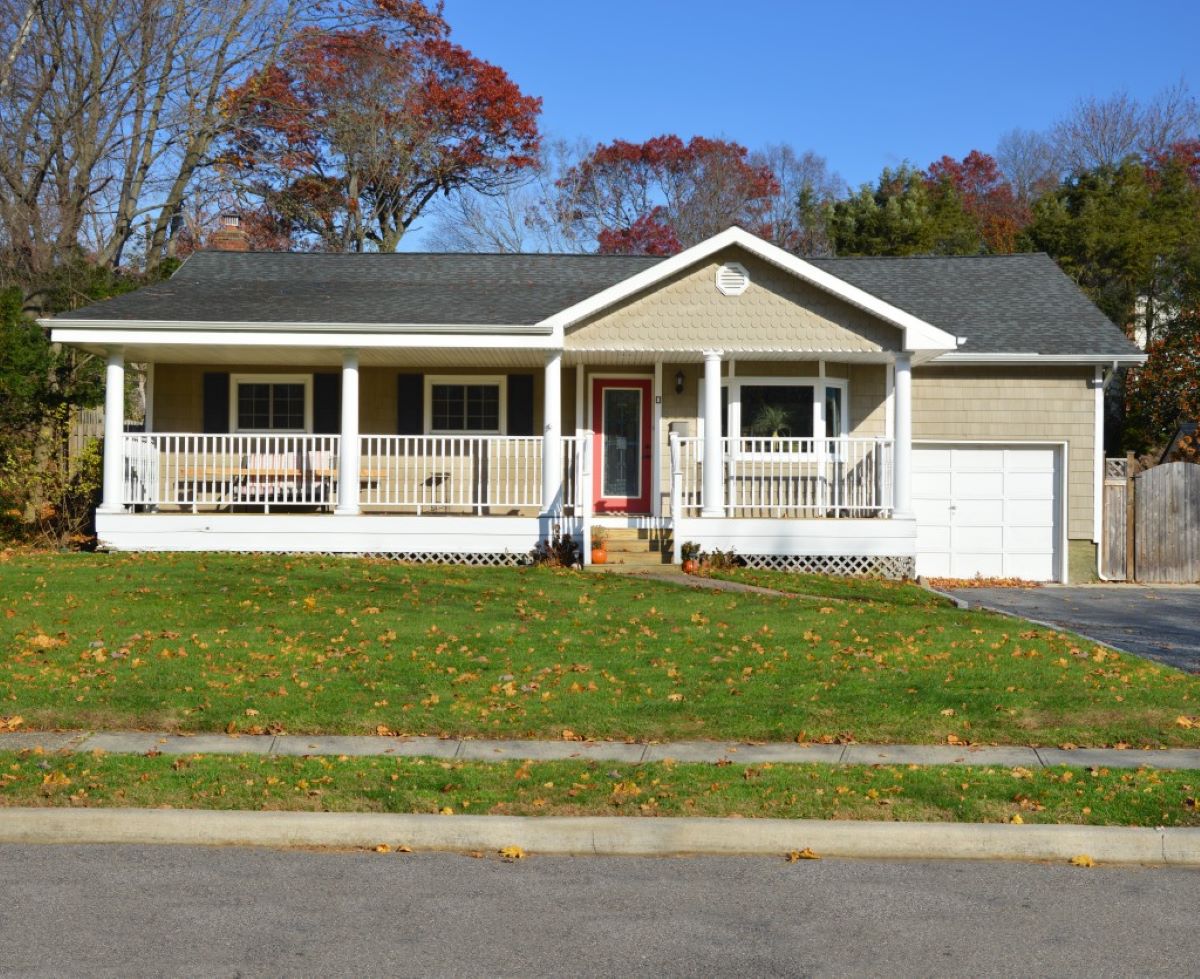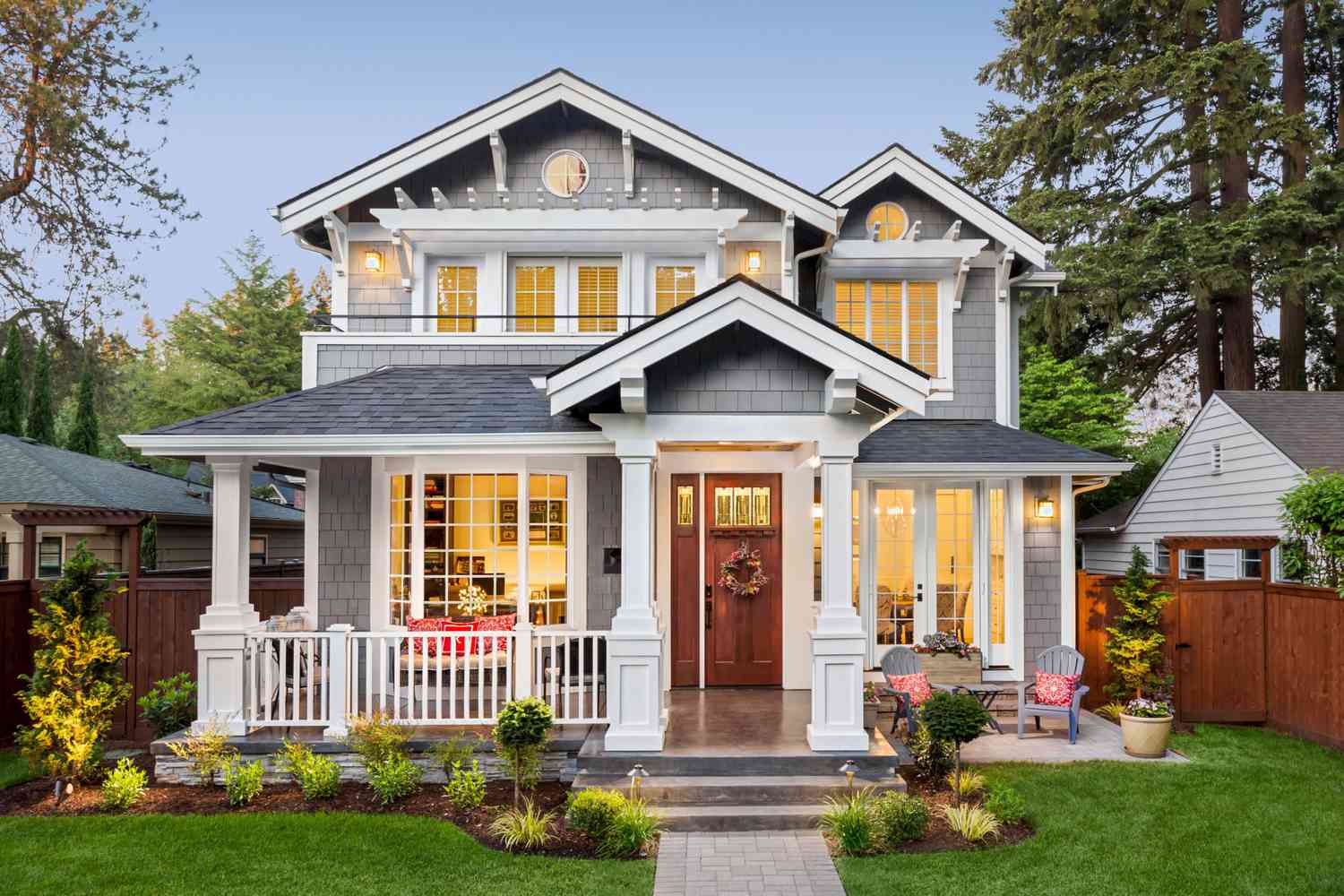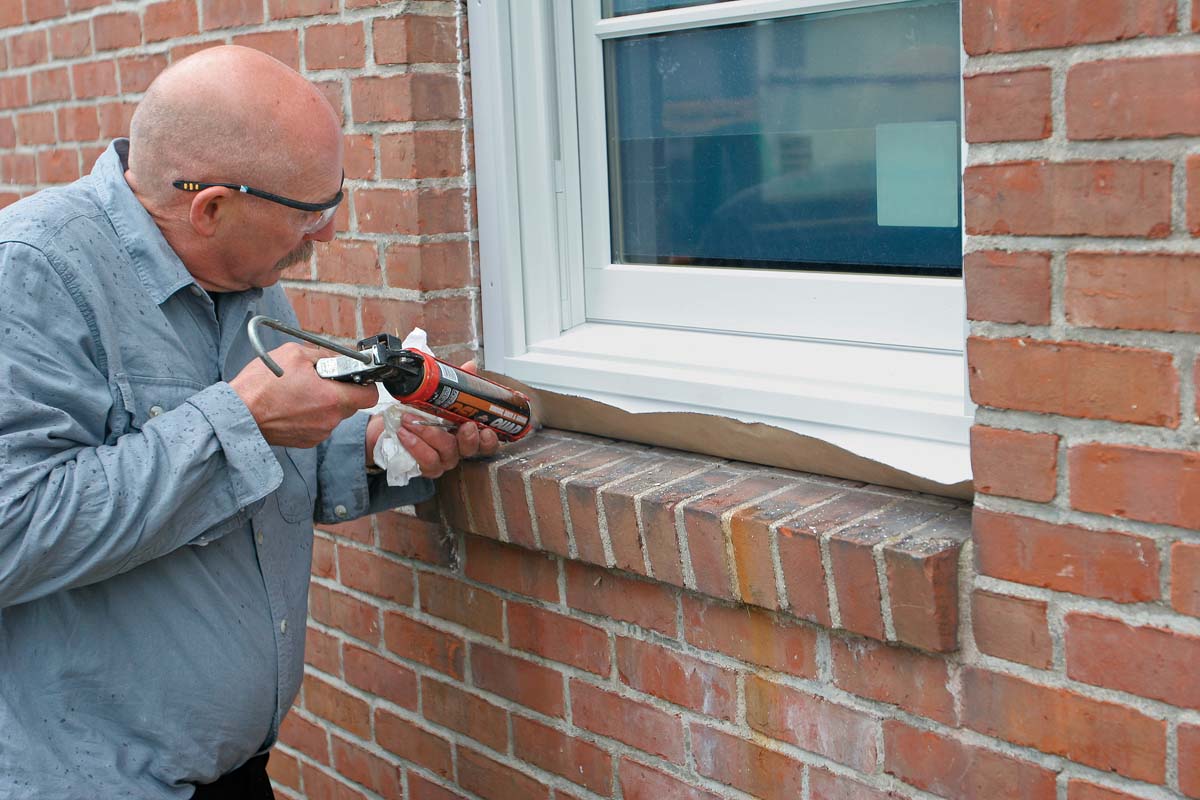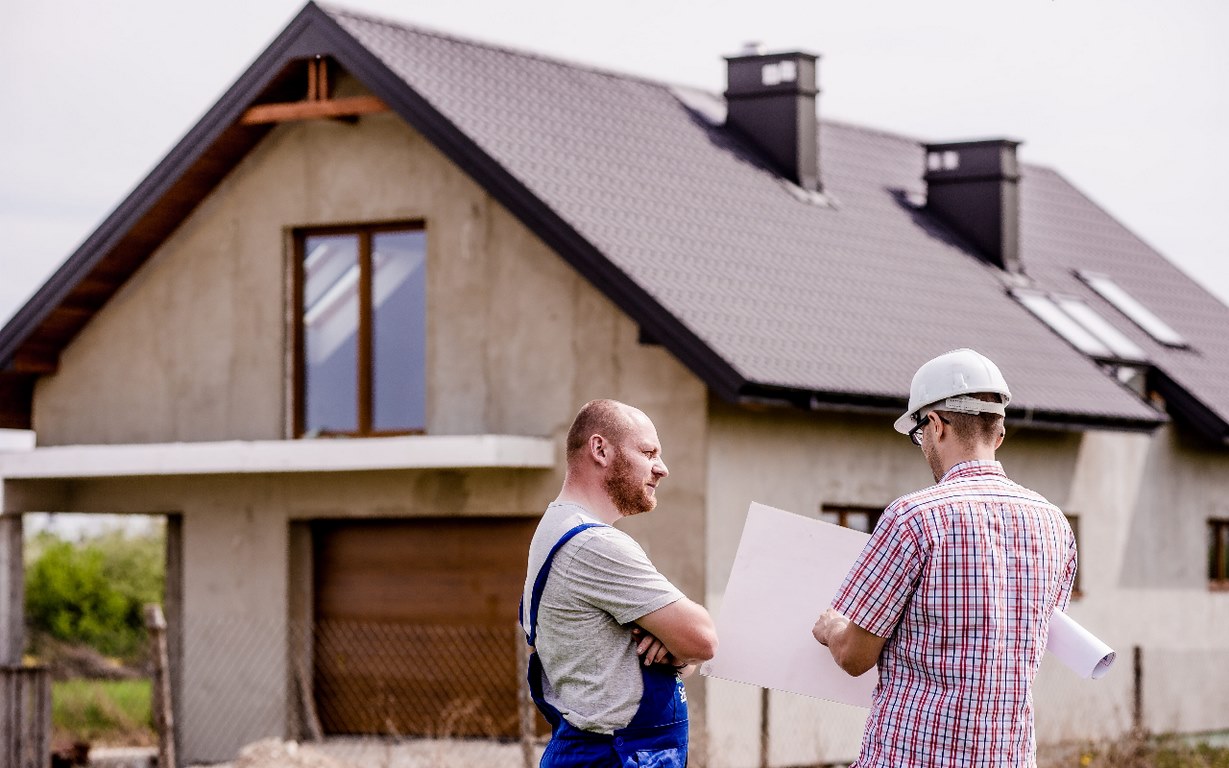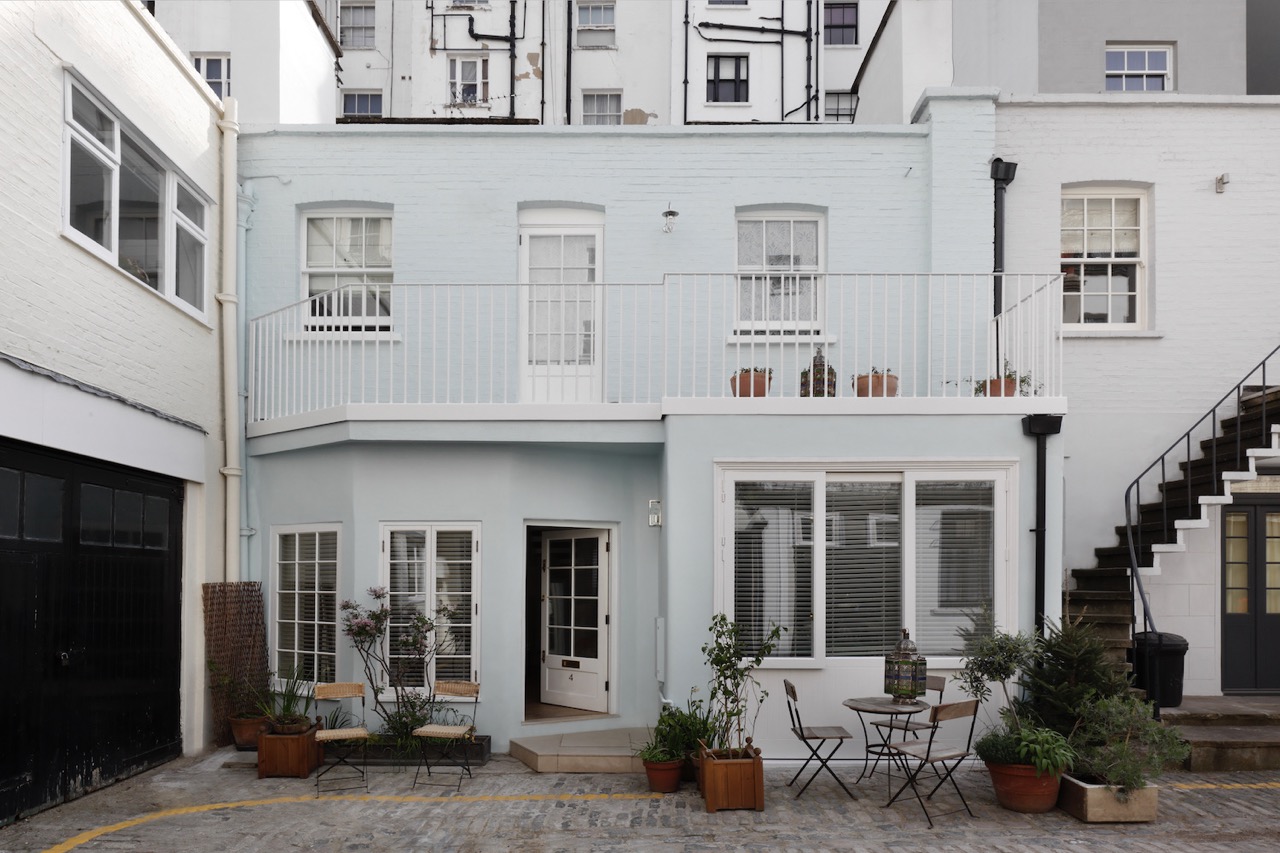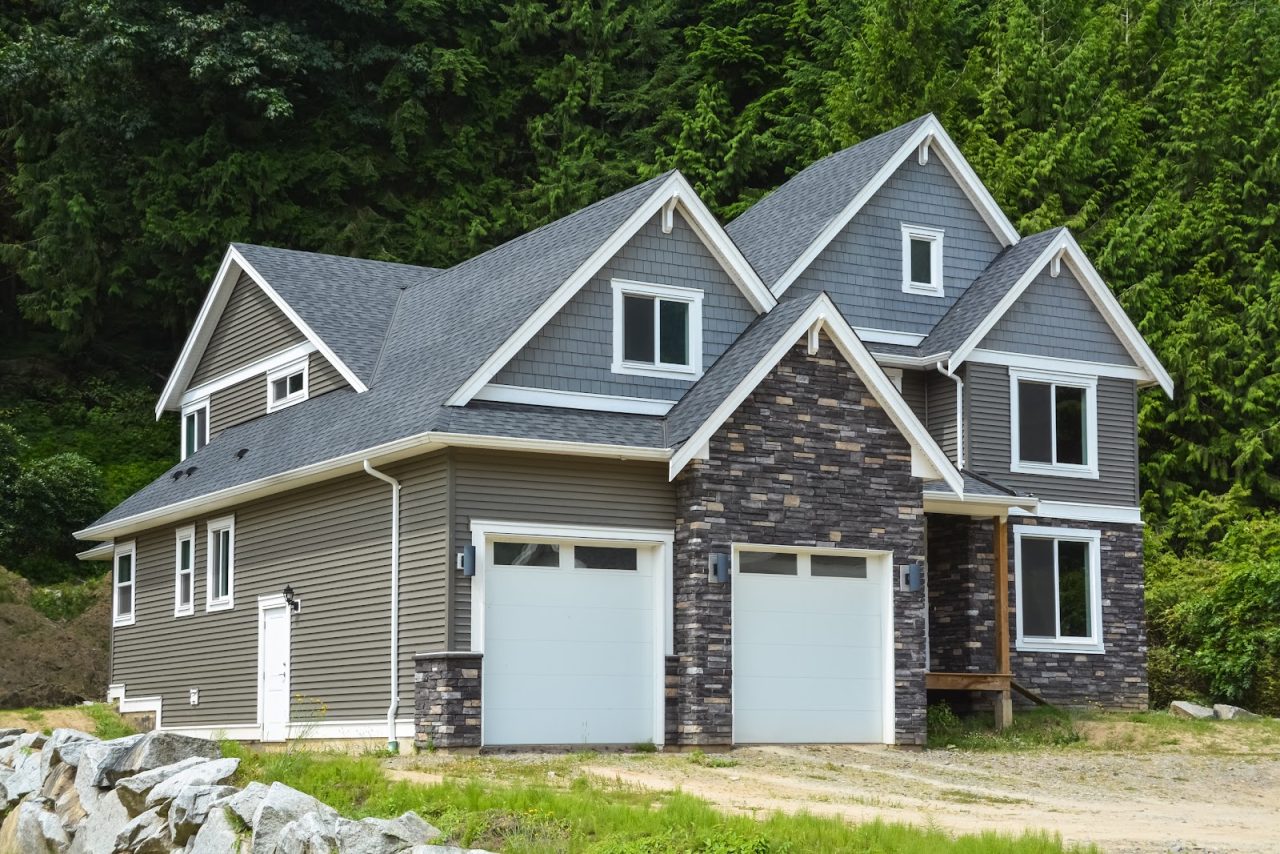Home>diy>Architecture & Design>How To Design A Curb For A New House?
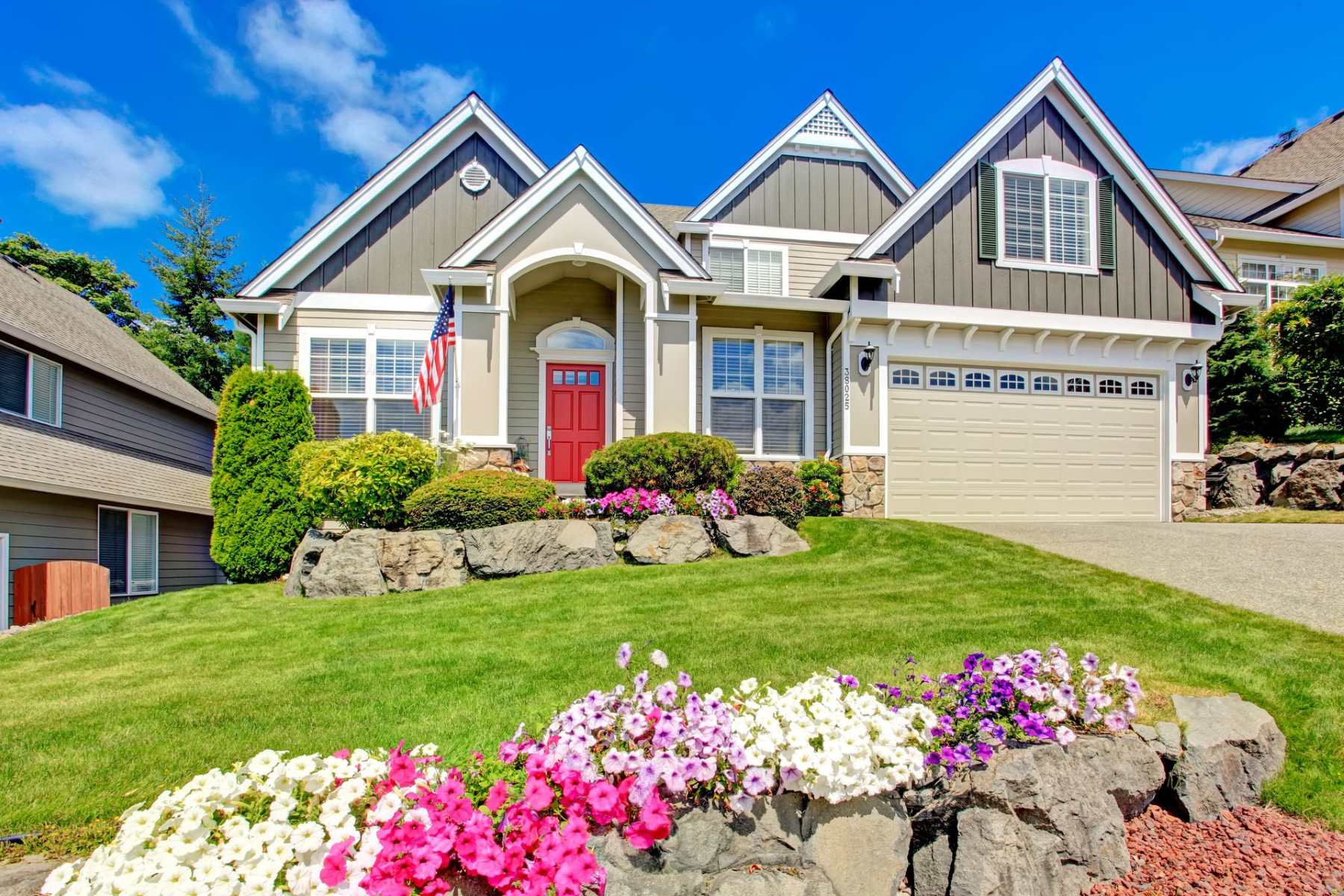

Architecture & Design
How To Design A Curb For A New House?
Modified: January 6, 2024
Discover the ideal time to add curb design to your new home's exterior with our expert architectural design services. Enhance the overall aesthetic and functionality with our professional expertise.
(Many of the links in this article redirect to a specific reviewed product. Your purchase of these products through affiliate links helps to generate commission for Storables.com, at no extra cost. Learn more)
Introduction
When it comes to designing a new house, every detail matters. From selecting the perfect paint color to choosing the right flooring, homeowners strive to create a space that is both functional and visually appealing. One often overlooked aspect of design is the curb appeal of a home. Curb design refers to the aesthetic elements added to the exterior of a house that enhance its appearance from the street.
Adding curb design to a new house not only improves its overall look but also increases its value. It creates a welcoming atmosphere and makes a strong first impression on passersby. However, it’s important to carefully plan and consider various factors before embarking on any curb design project.
In this article, we will explore the factors to consider before adding curb design around a new house and discuss the various options available to enhance its curb appeal.
Key Takeaways:
- Careful planning, adherence to local regulations, and integration with landscaping and driveway design are crucial for adding curb appeal to a new house. It’s an investment in both aesthetics and property value.
- From landscaping elements to lighting fixtures and artistic accents, there are numerous curb design options to enhance the visual appeal of a new house. Selecting elements that harmonize with the house’s style is key.
Read more: How To Negotiate A New Construction House
Factors to Consider Before Adding Curb Design Around a New House
Before diving into curb design for your new house, it’s crucial to take into account several key factors. By considering these factors, you can ensure that the curb design aligns with your vision, local regulations, and budget.
- Local Regulations and Permits: Start by researching your local regulations and obtaining any necessary permits for curb design. Some areas may have specific guidelines or restrictions regarding the type, size, and placement of curb enhancements. Adhering to these regulations is crucial to avoid any legal issues down the road.
- Landscaping Plan: Assess your landscaping plan and determine where and how curb design elements will fit in. Consider the existing layout of your front yard, including green spaces, trees, and flower beds. Plan the placement of curb enhancements in a way that complements the overall landscaping design.
- Driveway Design: Evaluate your driveway design and determine how curb design elements can enhance its appearance. Choose curb materials that seamlessly blend with the driveway, such as matching colors or textures. This cohesive design will create a unified and polished look for your home.
- Budget and Cost: Set a budget for your curb design project and consider the cost implications of different materials and designs. Determine what elements are most important to you and allocate your budget accordingly. It’s important to strike a balance between aesthetics and affordability.
- Timing and Construction Phases: Coordinate the curb design project with the construction phases of your new house. It’s best to plan the curb enhancements during the earlier stages of construction or immediately after completion to avoid any damage or interference with other construction activities.
By considering these factors, you can ensure that your curb design project goes smoothly and achieves the desired results. Now, let’s explore the various curb design options available for your new house.
Local Regulations and Permits
When it comes to adding curb design around a new house, it’s essential to familiarize yourself with the local regulations and obtain the necessary permits. These regulations can vary from one area to another, and it’s crucial to adhere to them to avoid any legal issues or fines.
Start by contacting your local municipality or city planning department to learn about the specific guidelines related to curb design. They can provide you with information on the allowed materials, dimensions, placement, and any other restrictions that may be in place.
Some municipalities may have specific design guidelines to maintain the visual harmony and character of the neighborhood. These guidelines might include limitations on the use of certain materials or requirements for architectural styles. By familiarizing yourself with these regulations, you can ensure that your curb design aligns with the overall aesthetics of the area.
In addition to local regulations, you may also need to obtain permits for certain curb design elements. This is especially true if you plan to make significant changes or additions, such as installing a retaining wall or constructing a decorative entrance feature. The permit process ensures that the project meets safety standards and is in compliance with local zoning laws.
To obtain the necessary permits, you will typically need to submit plans or drawings detailing your proposed curb design. These plans should include accurate measurements, materials, and any other relevant information. It’s important to allow sufficient time for permit approval, as the process can take several weeks or even months, depending on your location.
By following the local regulations and obtaining the required permits, you can proceed with your curb design project with confidence. It ensures that your project is compliant with the law and contributes positively to the overall aesthetics of your new house and the neighborhood.
Landscaping Plan
When considering curb design for your new house, it’s essential to assess your landscaping plan and ensure that the curb enhancements seamlessly integrate with the overall design. The landscaping plan sets the foundation for the curb appeal of your home and dictates how various elements will come together.
Start by evaluating the existing layout of your front yard. Take note of any existing green spaces, trees, flower beds, or other landscaping features that you want to preserve or enhance. Consider how the curb design elements will interact with these existing features and create a cohesive and visually appealing overall look.
Think about the scale and proportion of your landscaping plan. Consider the size of your house, the dimensions of your front yard, and the overall aesthetic you want to achieve. For example, if you have a small front yard, you might opt for low-maintenance curb design elements that won’t overpower the space.
When selecting curb design materials, such as pavers, stones, or decorative borders, choose options that harmonize with your landscaping plan. Consider the colors, textures, and styles that will complement the surrounding vegetation and hardscape elements.
Incorporating landscaping elements into your curb design can further enhance the overall aesthetics. This may include adding planters or flower beds along the edges of your walkway or driveway, installing lighting fixtures to illuminate key features, or creating focal points with ornamental trees or shrubs.
Remember to plan for the long-term maintenance of your landscaping elements. Consider factors such as watering requirements, pruning needs, and plant selection based on your local climate. Choosing low-maintenance plants and incorporating automated irrigation systems can help keep your curb design looking beautiful with minimal effort.
By carefully considering your landscaping plan and integrating it with your curb design, you can create a visually stunning and cohesive look for your new house. It not only enhances the curb appeal but also adds value and charm to your property.
Driveway Design
When it comes to adding curb design to your new house, don’t overlook the importance of driveway design. The driveway is often one of the largest visual components of the front yard, and its design can significantly impact the overall curb appeal.
Start by assessing the layout and dimensions of your driveway. Consider the shape, width, and length, as well as any curves or slopes. Understanding these factors will help you determine the best curb design options that will enhance the driveway’s appearance.
One important aspect to consider is the choice of materials for the driveway. There are various options available, including concrete, asphalt, pavers, gravel, and more. Each material offers different aesthetics, durability, and maintenance requirements. Choose a material that not only complements the style of your house but also fits within your budget and desired level of maintenance.
Once you have selected the material, you can further enhance the driveway’s design by incorporating decorative elements. This may include adding a border or edging made from different materials, creating patterns with different colors or textures, or even installing decorative lighting along the edges.
Consider how the curb design elements will complement the existing landscape and architecture of your house. The materials and colors chosen should harmonize with the overall aesthetic to create a cohesive look. For example, if you have a modern-style house, a sleek and minimalist design for the driveway would be more appropriate, while a traditional-style house may call for a more ornate and classic look.
Don’t forget to pay attention to the transitions between the driveway and other areas, such as the walkway or entrance. Ensuring a seamless integration between these elements can significantly enhance the overall curb appeal of your new house.
Lastly, consider the functionality and practicality of the driveway design. Take into account factors such as drainage, visibility, and parking space. A well-designed driveway not only looks aesthetically pleasing but also meets your practical needs.
By carefully planning and designing the curb elements for your driveway, you can elevate the overall curb appeal of your new house. It’s an opportunity to make a bold statement and create a lasting impression for anyone who approaches your home.
Consider adding curb design curb around a new house during the initial landscaping phase to ensure seamless integration with the overall design and to avoid disruption to existing features.
Read more: How Much Is A New House Construction
Budget and Cost
When considering curb design for your new house, it’s important to establish a budget and carefully consider the associated costs. The budget will help guide your decisions and ensure that you can achieve your desired curb appeal without breaking the bank.
Begin by determining how much you are willing to allocate for curb design. Take into account factors such as the size of your front yard, the extent of the enhancements you want to make, and any additional landscaping or hardscaping elements you plan to incorporate. Setting a realistic budget will allow you to make informed decisions and prioritize what is most important to you.
Consider the cost implications of different curb design options. The materials used, such as paving stones, decorative borders, lighting fixtures, or other decorative elements, can vary significantly in price. Research and compare prices from multiple suppliers or contractors to ensure you are getting the best value for your money.
Remember that curb design is an investment in your home’s value and overall aesthetics. While it’s important to keep an eye on costs, it’s equally important to consider the long-term benefits and return on investment. Quality materials and expert craftsmanship can contribute to the durability and longevity of your curb design, reducing the need for costly repairs or replacements in the future.
In addition to material and installation costs, don’t forget to factor in any maintenance expenses associated with the selected curb design. Some materials may require regular upkeep or periodic sealing, which may incur additional costs over time. Consider the level of maintenance you are willing to undertake and choose materials accordingly to align with your budget constraints.
It’s also worth exploring financing options if your budget doesn’t allow for the complete implementation of your desired curb design. Some suppliers or contractors offer flexible payment plans that can help spread out the expenses over time. However, be mindful of the interest rates and terms associated with financing options and ensure they align with your financial goals.
By establishing a clear budget and considering the associated costs, you can make informed decisions that align with your financial capabilities. A well-planned budget ensures that your curb design project remains on track and provides the desired aesthetic enhancements to your new house within your means.
Timing and Construction Phases
Timing is a crucial factor to consider when it comes to adding curb design around a new house. Coordinating the timing of your curb design project with the construction phases of your new house is essential for a smooth and efficient process.
It’s advisable to plan your curb design project during the earlier stages of construction or immediately after the completion of the house. This timing allows for better accessibility to the site and minimizes the risk of damage to the existing landscaping or newly constructed structures.
During the planning phase of your new house, consult with your builder or contractor about your intention to add curb design elements. They can provide valuable insights and help integrate the necessary preparations into the construction schedule.
Consider the sequence of construction activities and ensure that the necessary infrastructure is in place before proceeding with curb design. For example, if you plan to install lighting fixtures along walkways, ensure that the electrical wiring is appropriately routed during the construction phase.
Coordinating the timing of your curb design project with other construction activities can help streamline the process and minimize any disruptions. This could involve working closely with your contractor or tradespeople to coordinate schedules and ensure that all necessary groundwork, such as excavation or grading, is completed before the installation of curb design elements begins.
Effective communication between all parties involved is key to successful coordination. Keep an open line of communication with your builder, landscaper, and any contractors or suppliers involved in the curb design project. Regular updates and discussions will help align everyone’s expectations and ensure a smooth transition between construction phases.
It’s important to be aware that unforeseen delays or changes in construction schedules can occur. Be flexible and prepared to adjust your curb design plans accordingly. By maintaining open lines of communication and being adaptable, you can navigate any unexpected challenges and still achieve the desired curb appeal for your new house.
By carefully considering the timing and coordinating the curb design project with the construction phases, you can ensure a seamless process and maximize the efficiency and effectiveness of your new house’s curb appeal enhancements.
Curb Design Options for a New House
When it comes to enhancing the curb appeal of your new house, there is a wide range of design options to consider. Each option can add a unique touch and elevate the overall aesthetics of your home. Let’s explore some popular curb design options:
- Landscaping Elements: Incorporate landscaping elements such as flower beds, shrubs, trees, and decorative planters. These elements bring color, texture, and life to your front yard, creating a welcoming and visually appealing ambiance.
- Walkways and Pathways: Install thoughtfully designed walkways and pathways that guide visitors to your front entrance. Consider using materials like natural stone, concrete pavers, or bricks to create visually interesting patterns or textures.
- Lighting Fixtures: Install outdoor lighting fixtures to illuminate key features and enhance the nighttime ambiance. Options include pathway lights, uplighting for trees or architectural elements, and wall-mounted sconces for the entrance.
- Decorative Borders: Add decorative borders or edging along your driveway, walkway, or flower beds. Materials like brick, stone, or metal can create a defined and polished look, while also providing a practical separation between different areas.
- Water Features: Incorporate a water feature such as a fountain, pond, or waterfall to add a captivating focal point. The sound and movement of water can create a tranquil and serene atmosphere.
- Retaining Walls: Install retaining walls to add visual interest and help manage slopes or elevation changes in your front yard. Choose from various materials like stone, brick, or concrete to match the style of your house.
- Entrance Enhancements: Consider incorporating architectural elements at the entrance, such as a decorative gate, arbor, or columns. These features can add a touch of elegance and create a memorable first impression.
- Driveway Design Elements: Enhance your driveway with decorative borders, different materials, or unique patterns. This can create visual interest and make a statement as you approach your home.
- Artistic Accents: Consider adding artistic accents like sculptures, mosaic tiles, or artwork to your front yard. These unique touches can reflect your personal style and add a creative flair to your curb design.
Remember, the key is to choose curb design elements that align with the overall style and character of your new house. Whether you prefer a traditional, modern, or eclectic aesthetic, there are options available to suit your tastes and enhance the curb appeal of your home.
It’s best to consult with a professional landscaper or designer who can provide guidance and help you select the most suitable curb design options for your specific property. They can consider factors such as the architecture of your house, the size of your front yard, and your personal preferences to create a customized curb design plan.
By carefully selecting the right curb design elements, you can transform your new house into a visually stunning and inviting home that stands out in the neighborhood.
Conclusion
When it comes to designing a new house, adding curb design is a crucial aspect that should not be overlooked. Enhancing the curb appeal of your home not only creates a welcoming and visually appealing space but also increases its value and leaves a lasting impression on visitors.
Before embarking on any curb design project, it’s important to consider several factors. Familiarize yourself with the local regulations and obtain the necessary permits to ensure compliance with the law. Evaluate your landscaping plan and incorporate curb design elements that seamlessly integrate with the existing features. Assess your driveway design and choose materials and enhancements that enhance its appearance and functionality.
Establishing a budget and considering the cost implications of different curb design options is essential. Coordinating the timing of your project with the construction phases of your new house helps ensure a smooth and efficient process. By carefully considering these factors, you can create a curb design that reflects your style, fits within your budget, and enhances the overall aesthetic of your new house.
There are numerous curb design options to choose from, such as landscaping elements, walkways and pathways, lighting fixtures, decorative borders, water features, and more. Selecting the right elements that harmonize with your house’s style and complement the existing landscape will result in a cohesive and visually stunning curb appeal.
In conclusion, adding curb design to your new house is not only an investment in its aesthetic appeal but also in its overall value. With careful planning, consideration of regulations, budgeting, and selection of the right design elements, you can create a captivating and inviting entrance that sets the stage for your new home.
Frequently Asked Questions about How To Design A Curb For A New House?
Was this page helpful?
At Storables.com, we guarantee accurate and reliable information. Our content, validated by Expert Board Contributors, is crafted following stringent Editorial Policies. We're committed to providing you with well-researched, expert-backed insights for all your informational needs.
